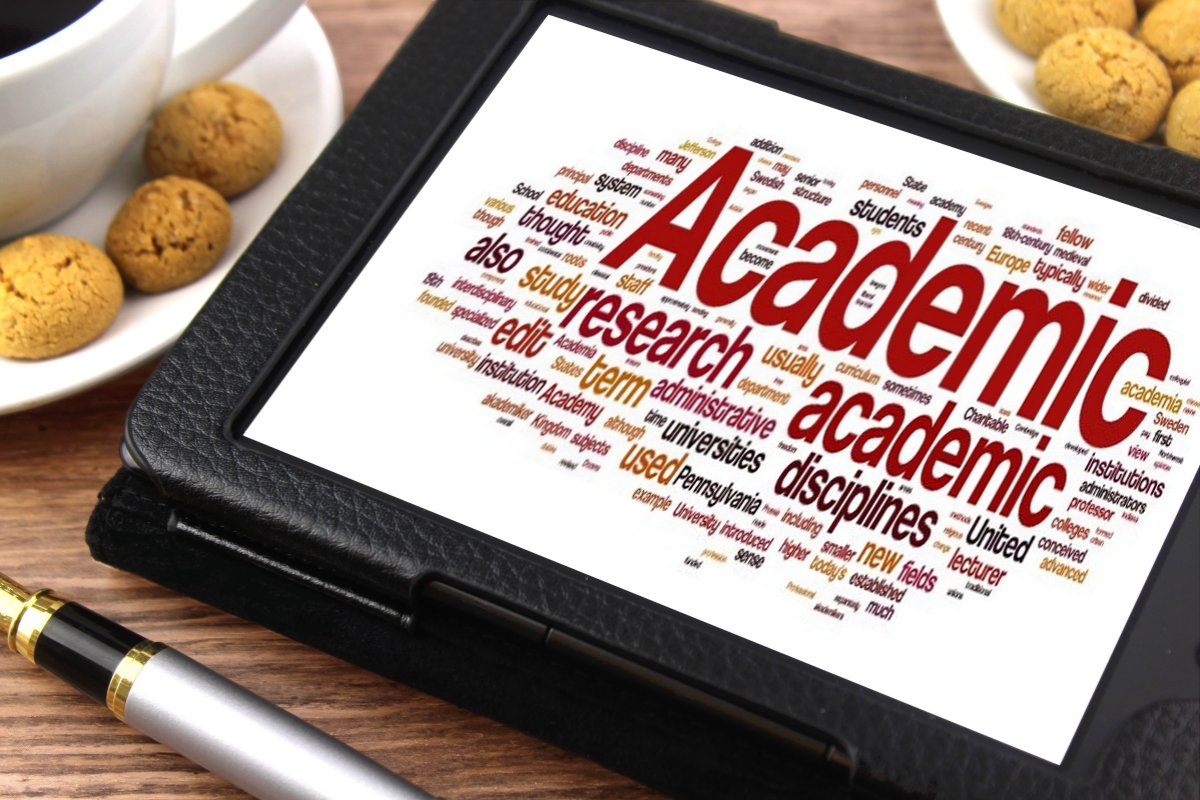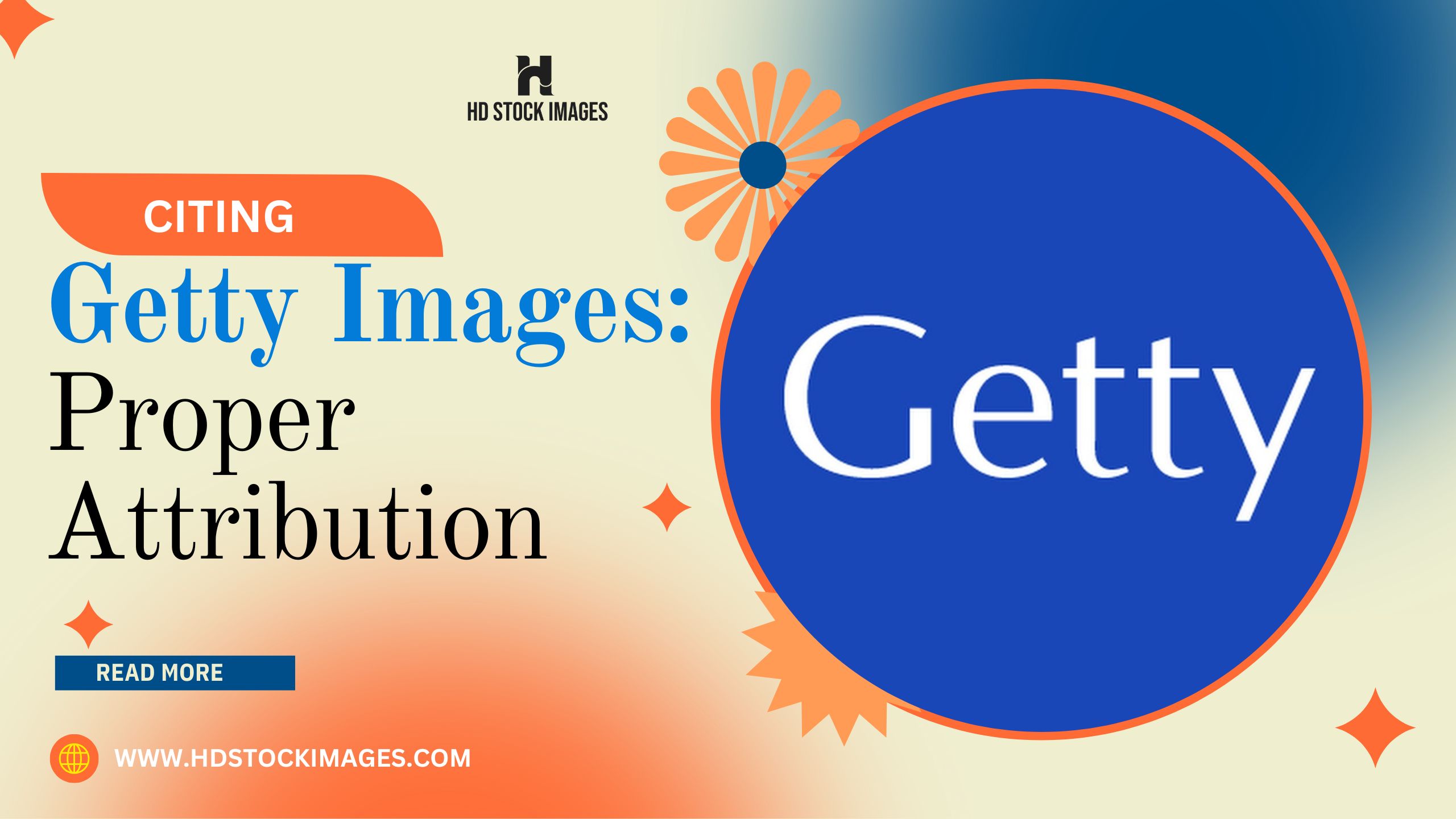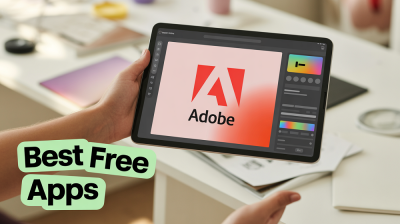I. Introduction
In the realm of academic and creative works, images serve as powerful visual aids and sources of inspiration. As content creators seek to enhance their projects with visuals from trusted platforms like Getty Images, it becomes imperative to uphold ethical practices through proper attribution. This blogpost delves into the essential art of citing Getty Images, ensuring compliance with licensing terms and respecting content creators' rights.From academic research papers to captivating creative projects, understanding the significance of attribution and exploring best practices will equip writers, designers, and scholars alike with the tools to ethically incorporate images, fostering a harmonious balance between creativity and responsible usage.Also Read This: What Has Happened to iStock Contributors
II. Getty Images: A Reliable Source for Visual Content
 In the digital age, visuals play a pivotal role in enhancing communication and storytelling. As one of the most reputable stock image platforms, Getty Images stands out as a reliable and go-to source for high-quality visual content. With a vast collection of millions of images, videos, illustrations, and more, Getty Images offers a diverse range of creative assets suitable for various purposes.Getty Images curates its library by collaborating with skilled photographers, videographers, and content creators from around the world. This collaborative approach ensures a rich and diverse selection of visuals, catering to the needs of content creators, businesses, media outlets, and artists across industries.Licensing options provided by Getty Images allow users to access content for commercial and editorial use while adhering to appropriate attribution guidelines. The platform's dedication to quality, legal compliance, and user-friendly access has earned it a solid reputation in the creative community.For content creators seeking compelling visuals to enrich their academic research, creative projects, marketing materials, or publications, Getty Images remains a trusted resource offering a vast array of professionally crafted content to elevate their works and captivate their audiences.
In the digital age, visuals play a pivotal role in enhancing communication and storytelling. As one of the most reputable stock image platforms, Getty Images stands out as a reliable and go-to source for high-quality visual content. With a vast collection of millions of images, videos, illustrations, and more, Getty Images offers a diverse range of creative assets suitable for various purposes.Getty Images curates its library by collaborating with skilled photographers, videographers, and content creators from around the world. This collaborative approach ensures a rich and diverse selection of visuals, catering to the needs of content creators, businesses, media outlets, and artists across industries.Licensing options provided by Getty Images allow users to access content for commercial and editorial use while adhering to appropriate attribution guidelines. The platform's dedication to quality, legal compliance, and user-friendly access has earned it a solid reputation in the creative community.For content creators seeking compelling visuals to enrich their academic research, creative projects, marketing materials, or publications, Getty Images remains a trusted resource offering a vast array of professionally crafted content to elevate their works and captivate their audiences.Also Read This: What is the Ideal Size for a YouTube Thumbnail
III. The Role of Attribution in Academic Works
Proper attribution of images in academic works is not just a matter of ethical responsibility; it is a fundamental aspect of maintaining academic integrity and credibility. Academic research papers, theses, dissertations, and other scholarly works often rely on visuals to enhance understanding and support arguments.Attribution in academic works serves several critical purposes:| Reason | Why it is important to cite images |
|---|---|
| Credibility and trustworthiness | Citing the source of images used demonstrates transparency and upholds the credibility of the work. It allows readers to verify the information and ensures that the images are from reputable and reliable sources. |
| Avoiding plagiarism | Failure to attribute images can lead to unintentional plagiarism, which is a serious academic offense. Proper attribution prevents misrepresentation of others' work and ideas. |
| Giving credit to content creators | Providing proper attribution acknowledges the effort and skill of the photographers, artists, and creators behind the visuals. It shows respect for their intellectual property rights. |
| Complying with copyright laws | Academic works, like any other publication, are subject to copyright laws. Proper attribution ensures that researchers adhere to copyright regulations and fair use guidelines. |
| Strengthening academic argumentation | Accurate and relevant visuals, along with proper attribution, can reinforce research findings and enhance the overall quality of academic work. |
โหหหหห พึ่งรู้ว่าลุคนี้มี Getty Images ถ่ายไว้ หน้าชีคือออออ ❤️🔥❤️🔥❤️🔥 pic.twitter.com/Pt55uQLYUD
— PHiLIPS• 🌶️ (@PhilipsTakes) July 26, 2023
Also Read This: Download Sound from Vimeo in Seconds with This Interesting Tool
IV. The Role of Attribution in Creative Works
In the realm of creative works, which encompass a wide range of projects such as artworks, advertisements, websites, marketing materials, and more, proper attribution of images is equally crucial. Ethical usage of visuals not only upholds the integrity of the creative process but also maintains the relationship between content creators and the broader creative community.The role of attribution in creative works can be understood through the following key points:1. Respecting Intellectual Property: Attribution in creative works shows respect for the intellectual property rights of content creators. It acknowledges their originality, talent, and effort put into producing the visuals.2. Building Trust with Audiences: Providing proper attribution enhances a brand's credibility and trustworthiness. It assures audiences that the creative work is authentic and not misleadingly using others' content.3. Avoiding Legal Issues: Unauthorized use of copyrighted images can lead to legal disputes and financial penalties. Proper attribution ensures that creators comply with licensing agreements and avoid copyright infringement.4. Encouraging Collaboration: When content creators receive appropriate attribution, they are more likely to collaborate with others and share their work openly, fostering a collaborative and supportive creative environment.5. Balancing Creativity and Ethics: Creatives can maintain their artistic vision while adhering to ethical practices through proper attribution. Attributing images in creative works does not compromise the overall design or message; rather, it enhances transparency and accountability.6. Strengthening Brand Identity: Unique and original visuals, alongside proper attribution, contribute to a brand's distinct identity and set it apart from competitors.Incorporating proper attribution in creative works requires careful consideration of where and how to include the attribution text. For example, in digital media like websites or social media posts, attribution can be added within the image caption or as an overlay. In print materials, it is typically placed adjacent to the image or in a visible location on the page.By practicing responsible image usage and providing accurate attribution, creatives not only uphold ethical standards but also contribute to a vibrant and respectful creative ecosystem, fostering appreciation and recognition for the diverse talents within the creative community.The following video is about Getty Images:Also Read This: How to Remove Adobe Stock Watermark: Free and Paid Methods
V. Best Practices for Proper Attribution
Proper attribution is essential in both academic and creative works to ensure ethical image usage and compliance with licensing terms. Adhering to best practices for attribution guarantees that content creators give credit to the original sources while maintaining academic integrity and respecting the rights of content creators. Here are some best practices for proper attribution:1. Clear and Visible Placement: Attribution should be prominently displayed near the image, ensuring it is easily noticeable and associated with the visual content. Avoid placing the attribution where it can be overlooked or obscured.2. Complete and Accurate Information: Include all necessary elements in the attribution, such as the name of the content creator (e.g., photographer, artist), image title or description, and the appropriate credit statement (e.g., "Image provided by Getty Images").3. Specific Attribution Guidelines: For images sourced from platforms like Getty Images, follow the specific attribution guidelines provided by the platform for each licensing type. Different licenses may have different requirements, so review them carefully.4. Attribution in Academic Works: In research papers and academic documents, include the attribution in the figure caption or image legend. Follow the citation style guidelines (APA, MLA, etc.) for consistent and accurate attribution.5. Attribution in Creative Works: For creative projects, find a balance between the visual design and attribution. Place the attribution where it is visible but does not detract from the overall aesthetics of the work.6. Attribution for Social Media and Websites: When sharing images on social media or websites, add the attribution within the post or image caption. Ensure the attribution remains visible when the image is shared or embedded.7. Attribution for Print and Offline Use: In print media or offline materials, place the attribution near the image or in close proximity, maintaining legibility and readability.8. Respect Watermarks and Copyright Notices: Do not edit, crop, or remove watermarks, copyright notices, or other identification marks placed on the image by the content creator or stock image platform.9. Keep Records of Attribution: Maintain a record of the attributions used for each image to ensure compliance with licensing terms and for future reference.10. Educate Team Members and Collaborators: If working in a team or collaborating with others, ensure everyone involved understands the importance of proper attribution and follows the best practices.By implementing these best practices, content creators can confidently and responsibly use images in their academic papers, creative projects, marketing materials, and beyond. Proper attribution not only demonstrates ethical behavior but also fosters a culture of respect and appreciation within the creative and academic communities.Also Read This: Understanding Commentary YouTube and Its Unique Content Style
VI. Common Attribution Mistakes to Avoid
While proper attribution is essential, there are several common mistakes that content creators should be aware of to ensure compliance with licensing terms and ethical image usage. Avoiding these mistakes helps maintain the credibility of academic and creative works and fosters a respectful relationship with content creators and stock image platforms. Here are some common attribution mistakes to steer clear of:1. Neglecting Attribution Altogether: Failing to provide any attribution for images, whether in academic papers or creative works, is a significant oversight and a breach of copyright regulations.2. Incorrect or Incomplete Attribution: Providing inaccurate or incomplete attribution details can misrepresent the original source and may lead to copyright issues.3. Misinterpreting Licensing Types: Different licensing types, such as Creative Commons and royalty-free, have distinct attribution requirements. Misunderstanding these guidelines can result in non-compliance.4. Using Images without Appropriate Licenses: Using images without obtaining the proper licenses and attributing them correctly can lead to copyright infringement and legal consequences.5. Hiding or Obscuring Attribution: Placing the attribution in a way that hides or blends it with the background can make it challenging for viewers to identify the original source of the image.6. Misusing Watermarked Images: Using watermarked images in published content is an infringement of copyright. Watermarked images are meant for preview purposes only and should not be used without proper licensing.7. Ignoring Specific Attribution Guidelines: Some images or licensing types may have specific guidelines for attribution provided by stock image platforms. Ignoring these guidelines can lead to non-compliance.8. Removing Copyright Notices: Removing copyright notices or watermarks from images is strictly prohibited, as they protect the intellectual property of the content creators.9. Delaying Attribution Updates: When updating content that includes images, ensure that the attribution is also updated accordingly to maintain compliance.10. Overlooking Collaborator Attribution: In collaborative projects, ensure all contributors, including content creators and team members, are appropriately attributed for their contributions.By being vigilant and attentive to these common attribution mistakes, content creators can uphold ethical practices, respect copyright laws, and avoid potential legal issues. Proper attribution not only demonstrates professionalism but also contributes to a positive and supportive creative community.Also Read This: Explore How to Upload Images to Shutterstock
VII. Creative Commons and Public Domain Images for Academic and Creative Use
 In addition to using images from stock image platforms like Getty Images, content creators have access to a wealth of visuals released under Creative Commons licenses and public domain images. These resources provide valuable alternatives for both academic and creative projects, offering content with varying levels of flexibility for usage and attribution requirements. Here's how Creative Commons and public domain images can be utilized:
In addition to using images from stock image platforms like Getty Images, content creators have access to a wealth of visuals released under Creative Commons licenses and public domain images. These resources provide valuable alternatives for both academic and creative projects, offering content with varying levels of flexibility for usage and attribution requirements. Here's how Creative Commons and public domain images can be utilized:
 admin
admin








